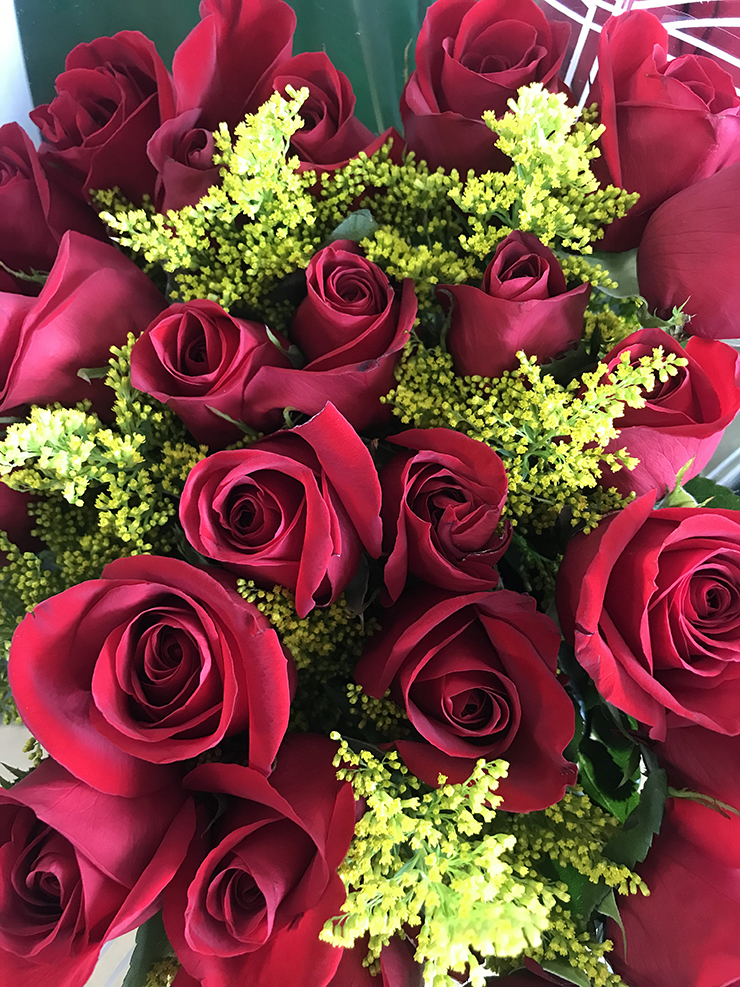Let It Grow
By Tammy Thornton
Color is a critical aspect of the garden. We may get carried away at the garden nursery and become enchanted with soft-pink roses, then turn the corner as bright orange dinnerplate dahlias catch our eye. We fill our shopping cart with this array of must-haves, only to realize that the color clash hurts our eyes and these two plants must live on opposite sides of the garden. So, while we can always find a place for new plants, some planning should come into play. This time of year, when the anticipation of spring seems almost unbearable, dreaming of perfect color combinations can keep us from idle minds.
If you think back to your grade school art class days, you may remember lessons on the trusty color wheel. Colors on opposite sides of the color wheel are called complementary colors. Normally, you wouldn’t think to use these contrasting colors side-by-side. Walk into a kitchen painted bright yellow and purple, and you may lose your appetite! However, placing flowers with complementary colors next to each other in the garden (that are opposite each other on the color wheel) will create a dramatic visual effect. Picture a yellow-green lady’s mantle (Alchemilla mollis) growing among the spikes of violet-red salvia. The stunning contrast somehow works. On the other hand, grouping flowers with colors that are next to each other on the color wheel will give a harmonious effect. Think how seamlessly yellow and yellow-orange paints would flow together when used next to each other in a watercolor painting of a sunset. You can be an artist in your garden by choosing analogous color flowers to grow together.

Contrasting colors make a stunning impact.
From here, we also consider the different sections of the color wheel. Would you like your garden to have bold colors of reds, oranges, and yellows from the hot side of the color wheel? Or do you prefer the softer, more peaceful look of pinks and lavender from the cooler side of the color wheel? Fortunately, you don’t really need to choose. One of my favorite things about gardens and the changing seasons is that this color scheme can drastically transform from month to month. The garden is a living thing that is always changing and evolving. In spring, pink tulips and bluish grape hyacinths may show the softer side of the garden’s personality. But come summer, this same section may blaze with red hot poker flowers and scarlet red crocosmia ‘Lucifer’. On the other hand, you may have a summer garden full of hot pink or white, but as the flowers fade and fall approaches, the leaves of your plants may turn to shades of yellow and burgundy. The laburnum walk at Barnsley House in England created by Rosemary Verey is a beautiful example of this drastic change from season to season. In spring, white-flowered honesty blooms among bright red tulips. As those flowers fade, the purple heads of allium rise up just as butter-yellow flowers of the laburnum cascade downward. Within months of each other, the same location has a vastly different mood.
Another option when planning your garden would be to use a monochromatic color scheme. Now texture and shape form the contrast and interest. The use of unique foliage can make a monochromatic garden of green become a work of art. Hostas and ferns in various shades and hues would just be the start of creating this green-on-green garden. The White Garden at Sissinghurst Castle is a model of isolating color in the garden. Strange as it might seem, instead of giving a boring appearance, these types of gardens make quite a statement. However, careful attention must be given to contrasting shapes and forms.
If a combination of colors is more to your liking, think about how some colors serve as neutrals in the garden. Lavender, gray, green, and white can work with a variety of other colors. Gray can look beautiful with shades of purple, pink, red, or yellow. Picture lamb’s ear leaves with deep burgundy dahlias. But the gray fuzzy leaves would look equally stunning with hot pink rose campion flowers. In my garden, the soft lavender-colored flowers of catmint (Nepeta) make dreamy companion plants with most flowers in my garden and are my go-to flowers when making a bouquet since their light color and airy appearance look good with a variety of colors.
For maximum impact, use swaths of color instead of a single plant to begin your palette. When you stand back to admire your garden, blocks of color will be more noticeable. Propagating your plants can be an inexpensive way to multiply your plants. Planting duplicates of the same plant will also help pollinators spy their favorite flower when flying overhead of your garden.
If you are just beginning to plan your garden, don’t become overwhelmed. Gardeners are always learning and making changes based on new knowledge. Start small and focus on what you love. Most of all, enjoy the journey.
We always love hearing from our readers. Please send your questions, comments, and garden pictures to shorelocalgardener@gmail.com.
Tammy Thornton lives with her husband, children, and crazy pets while enjoying a life of gardening, cooking, and going to the beach.














